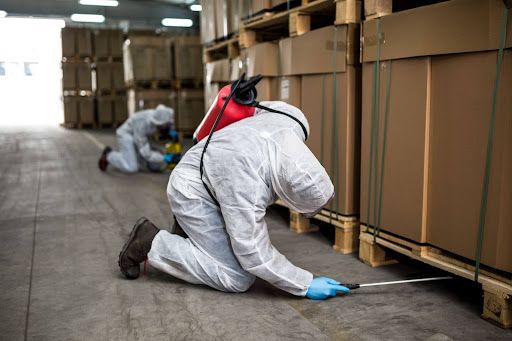How Weather Influences Pests in Idaho’s Urban Areas
Idaho’s striking seasonal changes—from crisp, snowy winters to sun-soaked summers—do more than shape our outdoor adventures. These weather patterns also set the stage for when, where, and how pests become a problem in cities like Boise, Meridian, and Nampa.
Understanding the relationship between local weather and pest activity helps Idaho residents and businesses implement effective, proactive pest management strategies. Explore how weather impacts urban pests in Idaho and how you can stay prepared year-round.
Seasonal Trends and Pest Activity in Idaho
Pest populations in Idaho are deeply influenced by the state’s climate shifts. While some pests are active year-round, most display distinct patterns tied to the changing seasons.
Spring: Emergence and Reproduction
As Idaho’s temperatures rise and snow melts away, pests that overwintered indoors or underground begin to emerge. Ants, spiders, and wasps are particularly active in spring, searching for food and new nesting sites. Moisture from spring rains also attracts pests like earwigs and centipedes to basements and crawl spaces. Spring is a critical season for pest prevention as populations rebound and reproduce.
Summer: Peak Activity in Urban Environments
Warm, dry summers in Idaho provide ideal conditions for many urban pests. Insects such as mosquitoes thrive near standing water from irrigation or summer storms, while cockroaches and ants invade homes in search of food and water. Rodent activity can also spike as food becomes more abundant in urban landscapes. Mosquitoes breed prolifically in warm weather, making summer a high-alert season for homeowners.
Fall: Seeking Shelter Indoors
As temperatures cool in autumn, pests like mice, rats, and spiders begin seeking warmth and shelter indoors. Urban areas with abundant food sources—such as restaurants and residential kitchens—are especially attractive. Fall is a prime time for rodents to infiltrate buildings, causing potential structural and health concerns.
Winter: Overwintering Indoors
Even as outdoor activity slows, Idaho’s cold winters don’t eliminate pest threats. Many pests, including stink bugs and cluster flies, enter a state of dormancy or seek refuge inside buildings. Urban homes and commercial structures offer protection from freezing temperatures, making preventative pest control essential even in the winter months.
How Local Weather Events Affect Pest Activity
Beyond seasonal shifts, specific weather events can create sudden surges in pest populations:
- Heavy Rainfall: Intense storms can flood insect nests, prompting ants and spiders to invade homes seeking dry shelter.
- Heatwaves: Extended periods of heat drive pests like cockroaches and rodents indoors, where temperatures are more stable.
- Drought: Dry conditions force pests to seek moisture, often leading them directly into kitchens and bathrooms.
Adapting Pest Management Strategies to Idaho Weather
Recognizing how weather influences pest behavior allows Idaho residents and businesses to adapt their pest management plans effectively.
Proactive Inspections and Maintenance
Regular inspections of your property—especially before seasonal transitions—can help identify potential pest entry points. Sealing cracks and gaps, repairing screens, and maintaining proper drainage are key steps. For urban businesses, partnering with a professional Idaho pest control service ensures thorough monitoring and rapid response to emerging threats.
Seasonal Treatments
Targeted pest control treatments, customized to seasonal risks, can significantly reduce infestations. For example, springtime applications around foundations deter emerging insects, while late summer treatments help manage mosquito populations. Natura Pest Control offers seasonal service plans tailored to Idaho’s unique climate and pest cycles.
Integrated Pest Management (IPM)
Integrated Pest Management (IPM) combines monitoring, exclusion, and environmentally responsible techniques to manage pests. By focusing on prevention and education, IPM reduces reliance on chemical treatments and supports long-term pest control.
Idaho Pest Control: Stay Prepared Year-Round
Weather in Idaho is always changing, and so are the pest pressures facing urban residents. By staying attuned to local weather trends and adjusting your pest control strategies accordingly, you can protect your home or business from unwanted guests in every season. If you’re ready to take the next step in safeguarding your property, reach out to Natura Pest Control for expert, environmentally conscious solutions.
Remember, effective Idaho pest control starts with understanding how weather impacts pest activity. Stay informed, stay prepared, and enjoy peace of mind—no matter what the forecast brings.




